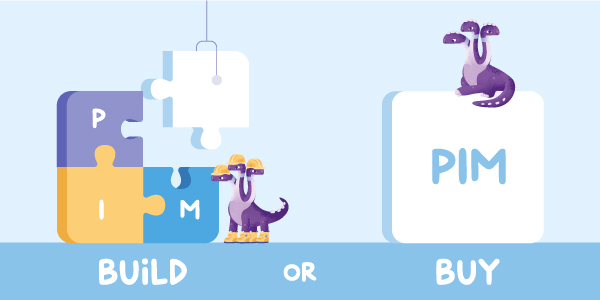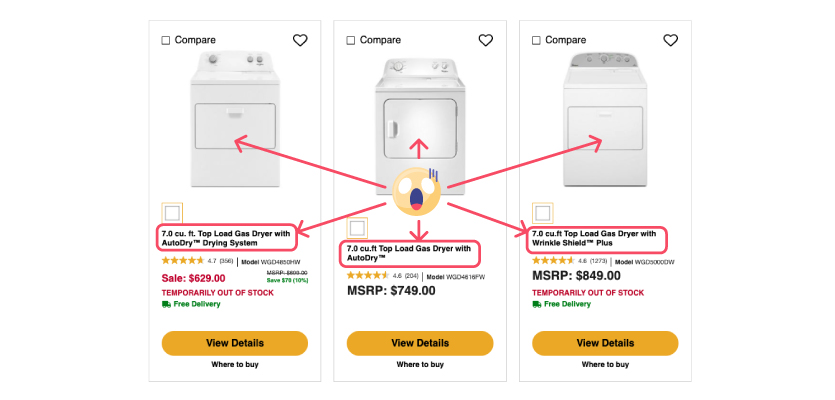Don’t worry — we’re not talking about the election. Instead, we’re talking about the process of selecting the right
PIM (product information management) solution. But picking a political candidate and picking a PIM solution have more in common than may first meet the eye. In both situations, to choose the candidate that’s right for you, you need to know where they stand on the issues you care about — your use cases.
So, how do you find out which PIM candidate is right for you? We’ve polled the team of product experience experts here at Akeneo to find the nine issues you should consider as you evaluate PIM candidates. Take a look at their suggestions, and use this guide to help you make a smart PIM choice!
Issue No. 1: Architecture
Let’s start with the core of any PIM solution — its
architecture. A good PIM candidate will be a cloud-first offering that’s built with a modern SaaS architecture. This architecture should be designed to give your team access to the power of PIM without forcing your organization to implement and manage costly on-premises IT infrastructure. That way, you can focus on running your business while your solution provider takes care of running your PIM instance smoothly and securely on a cloud infrastructure.
It should also offer a robust, well-documented API. This allows for the quick and easy development of integrations, connectors, and extensions that can simplify connecting to your sales channels and advance the PIM capabilities.
Issue No. 2: Data Collection
A good PIM candidate should make it much easier for your team to manage and enrich product information — a process that starts with
collecting and centralizing your data in one place. But this data exists in a wide variety of systems, including internal sources like your Enterprise Resource Planning (ERP) system, marketing database, other systems, and external sources such as suppliers, which can make data collection a challenge.
That’s why a good PIM candidate will offer a deep roster of capabilities designed to make it easy for you to collect and centralize product information. This includes tools such as connectors, APIs, and import features to collect data from various applications. The best candidates will even provide product content directly from trusted sources, so look for a solution that offers an integrated capability to onboard product data directly from your suppliers.
Issue No. 3: Standardization
Once you’ve centralized your product information in one place, you’ll need to clean and
standardize that data to make it easier to consolidate and configure for use in your product catalog. Standardizing product data is necessary because the raw source product data comes from systems with varying file formats, naming schemes, attribute values, and more. The PIM should help your team to accurately map and consolidate your raw data from these different sources.
A good PIM candidate should also make it much easier to categorize products, including supporting product variants (i.e., products that vary by color, size, etc.), and organize your product data for the requirements for different channels and languages. Look for a solution that saves labor and increases efficiency in this area via automation and business rules.
Issue No. 4: Enrichment
Once data is collected and standardized, you need to use that product data to create accurate, compelling product information to deliver exciting, emotionally resonant product experiences. This includes
enriching the products’ technical data with usage information and emotional information – content that makes customers feel connected to your brand and confident in making a purchase. What does it take to forge this personal connection with your buyers? Compelling, in-depth product descriptions, digital assets like photos, videos, and documents, related information to help communicate your brand values, and more.
A good PIM candidate will shorten your time-to-market, making the enrichment process easier and faster by providing features such as an easy-to-use interface, bulk actions, and mass editing capabilities, validation workflows, and collaboration tools to help streamline your team’s day-to-day work. It will also help you reduce manual enrichment effort via features like automation and business rules, and provide a mechanism to measure product data quality and ensure a high-quality product experience.
Issue No. 5: Localization and Contextualization
If you are selling in multiple regions and on multiple channels, you need to localize and contextualize your product experiences for the requirements of each region and the rules of each channel.
Localization is all about adapting product data for specific markets, translating it for different locales, and providing images that are relevant and appropriate — even altering your product assortment to meet the needs of your new customers.
Contextualization, meanwhile, means ensuring that the appropriate product data is used for each channel. This includes managing and meeting different product listing requirements for each marketplace, customizing product descriptions or digital assets for various channels, and providing a product experience that’s tailored to the touchpoint your customers are using.
A good PIM candidate won’t merely be a container for your product data and assets. Instead, it will help you improve your data quality and product experience by crafting localized and contextualized product descriptions, images, and other data for each channel you sell on and every locale you sell in. It will also measure and improve the data quality that identifies low-quality product information and offers suggestions to enhance your product experience in the process.
Issue No. 6: Distribution
After you have a complete catalog tailored for different markets and channels, this catalog will need to be
distributed across your owned channels such as your webshop, print materials, and mobile app, and syndicated to your unowned channels such as marketplaces. So, make sure your preferred PIM candidate can quickly and efficiently deploy your catalog to the desired channels. A good solution will track when your products are complete and ready to sell and offer connectors and export capabilities designed to publish catalogs that work for each channel.
It will also offer features designed to ensure your team only exports the right data to each channel by allowing them to filter export data based on selected product attributes, families, categories, and other identifiers. Finally, a good PIM candidate will enable your marketing team to save these export profiles for future usage.
Issue 7: Manageability
When managing information for hundreds, or even thousands, of products, human error will inevitably introduce product data inconsistencies. That’s why it’s crucial that a good PIM candidate helps you catch these errors before you publish with features designed to verify the accuracy of individual contributions to product data, as well as its overall completeness. Your PIM should also help define the minimum level of quality and completeness required for a product to be published to a given channel and locale.
A good PIM will also help you
manage not only your product data, but also your team’s workload, with capabilities that allow you to more easily identify your team and define your product information management processes. This includes tools that ensure your employees only have access to the product and field values they need, along with features that use validation workflows to improve productivity.
Issue No. 8: Maturity
Implementing a PIM solution and building a top-notch PXM practice is not a one-and-done effort. The needs and goals of your organization, market conditions, customer behaviors, and other factors are continually changing and shifting, meaning that the work of building a top-notch product experience is never truly over. Teams should work collaboratively to track progress over time, so you can adapt and evolve to support your business needs.
Your PIM candidate should offer a path to help you with this progress along your product experience journey. This path should light the way to becoming a more mature organization when it comes to managing product information and continuing to create better product experiences. Make sure you find a solution that has a
maturity path and plan in place. That way, you and your team can ensure that they’re following that plan closely as they continue to progress along their journey.
Issue 9: Community & Ecosystem
Our final issue focuses not on the PIM solution itself, but on the support system surrounding it. A good PIM candidate will have a
strong ecosystem of solution partners to help you implement your PIM easily and efficiently, along with a
thriving community of technology partners that are there to ensure you get the most out of your PIM instance, and that it suits the needs of your company.
The sign of a healthy ecosystem isn’t just a high quantity of integrators or extensions. Perhaps more importantly, your PIM candidate should also offer a range of high-quality partners and vendors. These partners shouldn’t just be there to sell an additional solution. Instead, they should support you, work transparently to help you achieve your goals, and offer resources such as thought leadership and best practices, a roadmap to success, and a vision for the future.
Choose the right PIM candidate for your needs
Choosing the right PIM candidate isn’t easy, and there are lots of issues to consider when it comes time to make your decision. Each PIM use case and project is unique, so make sure you find a well-suited solution to your organization’s individual needs and objectives.
If you have any questions as you travel along your PIM journey,
feel free to reach out to our team of product information and product experience experts. They’re here to answer and product information query and conquer any challenge that stands in your way.






















